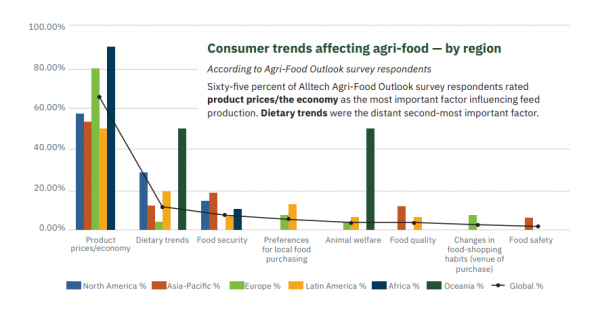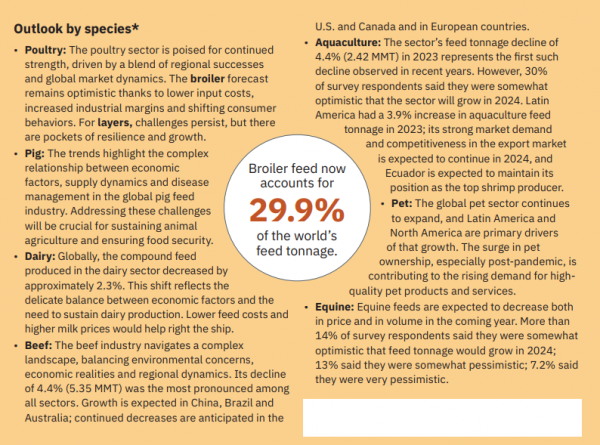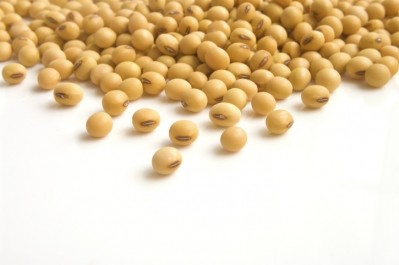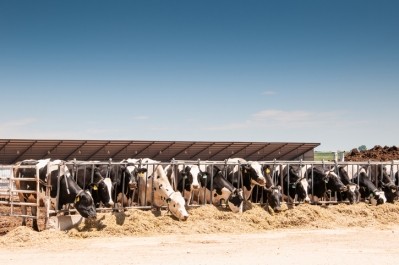Anatomy of a fall in global feed production
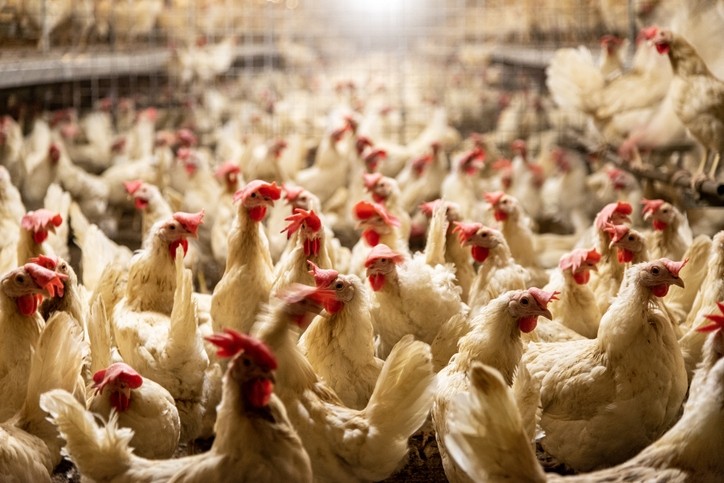
Drawing upon data collected from 142 countries and over 27,000 feed mills, the report offers a detailed analysis of the trends, challenges, and opportunities facing the sector.
Despite a marginal decrease of 0.2% from the previous year, global feed tonnage stood at a substantial 1.29 billion metric tons in 2023. This decline reflects the divergent trajectories of various sectors within the industry. While the broiler, layer, and pet segments witnessed steady growth, others such as pig, dairy, beef, aqua, and equine experienced a drop in demand.
Behind these trends lie multiple factors driving change. Intensive production systems, leveraging advancements in animal nutrition and technology, are revolutionizing feed efficiency, allowing for the production of more with less. However, challenges persist, with sluggish production of animal protein and tightening profit margins posing significant obstacles to sustained growth.
Asia-Pacific leads the charge
Regionally, the landscape is equally diverse.
In 2023, Asia-Pacific emerged as the leader in feed production growth, experiencing an impressive increase of 6.54 million metric tons (MMT) or 1.4%. The broiler, layer, and dairy sectors contributed significantly to this growth, with tonnages rising by 7.07 MMT, 1.34 MMT, and 1.10 MMT, respectively. Despite challenges such as changing consumer behaviors, high production costs, and prevalent animal diseases, Asia-Pacific remained resilient.
Meanwhile, Latin America's feed production grew by 2.46 MMT (1.24%) in 2023. Its robust monogastrics exports market and expanding aqua and pet sectors fueled this expansion. Aquaculture feed tonnage remained on an upward trajectory, experiencing a robust growth trend with an increase of 3.9%.
In Africa, growth was slower but steady, with an increase of 1.95% or nearly 1 MMT. Oceania also saw significant growth, with a 3.71% increase or 0.39 MMT.
But feed production in Europe continued its downward trend, particularly in the beef sector, dropping by 3.82% in 2023. The region grappled with political and market crisis management pressures, alongside a growing demand for sustainable feed solutions.
North America witnessed a decrease of 2.8 MMT (1.1%) in feed production, with beef feed tonnage experiencing a significant decline. Despite slight slips in the pig and dairy sectors, the broiler, layer, and pet sectors compensated for the decrease. There was a reduction in the number of feed mills, but a slight increase in the number of pet food plants. The challenges faced, including the lingering drought and high production costs, may lead to further herd reduction in 2024, particularly in Canada where beef feed tonnage was down by 10.15% in 2023.
Outlook: Cautious optimism pervades
Looking ahead, a sense of cautious optimism pervades the industry landscape.
The Alltech Agri-Food drew down insights from a comprehensive qualitative survey. Over half (54.8%) of respondents were relatively upbeat about the poultry sector's continued growth. Some 37% of those surveyed showed guarded optimism towards pig feed production growth in 2024, slightly surpassing those who remained neutral (32%).
In terms of overall feed production, the industry anticipates growth, buoyed by improving market conditions and consumer adaptation to uncertainties. Brazil and Southeast Asia are poised for robust production expansion, with marginal increases expected in China and Oceania. Although Latin America is expected to lead production growth, the pace may be slower compared to 2023. Meanwhile, reduced livestock inventories in the US are forecasted to drive a decline in feed demand.
Disease and labor costs
However, the report noted that agriculture faces challenges such as high raw materials prices, low returns for producers, and ongoing concerns about animal diseases.
This year’s respondents said the disease threat remained a top factor in 2023.
Highly pathogenic avian influenza (HPAI) affected the most countries around the world. The disease has been a major factor in Latin America. The risk of it affecting commercial poultry farms in Brazil, the world’s largest poultry producer, adds uncertainty to the global supply chain, finds the report.
But those polled also noted that the risk is decreasing due to improved control efforts like better tools for biosecurity and traceability, vaccines and advanced genetic technologies.
In Europe, other prominent issues include labor costs, policies, standards, and geopolitical events, while in Latin America, geopolitical outlook and supply chain disruptions remain significant factors. North America also grapples with labor costs, while Oceania encounters challenges with high interest rates.
Water pollution reduction on the radar
Regarding sustainability efforts, regional differences emerge in driving environmental sustainability initiatives. Government efforts lead in Europe and, to a lesser extent, Asia-Pacific, whereas consumers take the forefront in North America. In Latin America, farmers are spearheading sustainability endeavors.
Water pollution reduction methods are being implemented most widely, followed by efforts to improve feed efficiency, promote renewable energy, reduce antibiotic usage, enhance food production efficiency, and improve animal welfare. These sustainability measures are initiated by both governments and the private sector, reflecting a collaborative approach towards addressing environmental concerns within the agriculture industry.

